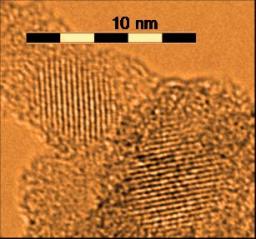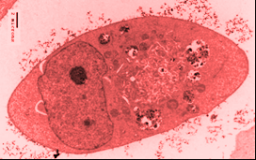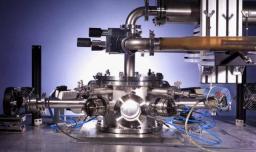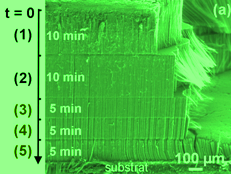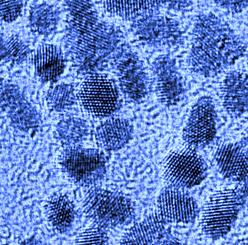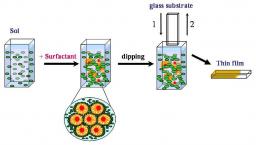

Head: Cécile Reynaud
This topic is in the field in full rise of nanoscience and nanotechnology, which involves the study of structures or materials which have at least one characteristic dimension below 100 nm and have, therefore, specific properties. We develop our own nano-objects synthesis methods with a bottom-up approach. The aim is the formation of new entities with controlled physical and chemical properties. We study their growth process and their specific properties, particularly those induced by size effects. Taking advantage of the diversity of nanostructured objects that we are able to synthesize (nanoparticles, carbon nanotubes, membranes, electrodes...), we develop original nanomaterials or nanocomposites. Dispersion and suspension of these nano-objects, with or without prior functionalization, are studied in order to enable their convenient and safe manipulation. Many characterization methods are implemented, in particular optical spectroscopy and electron microscopy, often through collaborations. The concerned applications are in the fields of optics, optoelectronics, catalysis, sensors and markers (fluorescent or magnetic), new technologies for energy, new technologies for health, next generation nuclear materials, etc. This activity is in close relation with the national and international network of basic and applied research through many national and international contracts.
The group is structured into four main projects: nanoparticles by laser pyrolysis, aligned carbon nanotubes, nanocomposites based on functionalized nanoparticles, and chemical sensors for air pollutants detection. Finally, in order to address the social issues on the risks associated with manufactured nano-objects, the group is also strongly involved in a transverse activity: the study of the toxicological effects of nano-objects.
With regard to the nanoparticles grown by laser pyrolysis, the objective is to maximize the versatility of this method in order to synthesize original nanoparticles: very small sized nanoparticles (photoluminescent silicon nanocrystals), complex structures (doped nano-oxides, nanocomposites) or peculiar crystalline phases (metastable or non-stoichiometric). We have also developed new instruments for addressing in-situ formation mechanisms of nanoparticles: the SONATE setup (nanoscale aggregates supersonic jet).
Regarding the synthesis of aligned carbon nanotubes, we have shown a growth mechanism from the base for these multiwall nanotubes obtained by catalytic decomposition of liquid aerosols. This study of growth process is currently being deeply investigated with in-situ diagnostics. The most studied properties are those that exploit the characteristics of the nanotubes, as for example their peculiar arrangement as aligned carpets for the development of unidirectional composites, their structure and their straight length in order to achieve nanocomposites in 2D or 3D organization.
The activity based on functionalized nanoparticles focuses on developing thin films of functionalized platinum nanoparticles and on studying their electrochemical behaviour. The targeted application for these nanocomposites is the improvement of fuel cells performances. A significant result is the development of electrodes based on the controlled combination of carbon nanotubes and platinum nanoparticles, showing promising properties for the reduction of oxygen.
In the study of chemical air pollutants sensors, based on nanoporous materials, the objective is to increase the sensitivity and selectivity towards various gaseous pollutants by incorporating probe molecules that can react specifically with the target pollutant. Significant successes were obtained in the measurement of the ambient public or industrial environment atmosphere (e.g. formaldehyde and benzene detection).
•  Synthèse et caractérisation des nano-objets / Synthesis and characterization of nano-objects
Synthèse et caractérisation des nano-objets / Synthesis and characterization of nano-objects
• Service des Photons Atomes et Molécules • Service des Photons Atomes et Molécules









